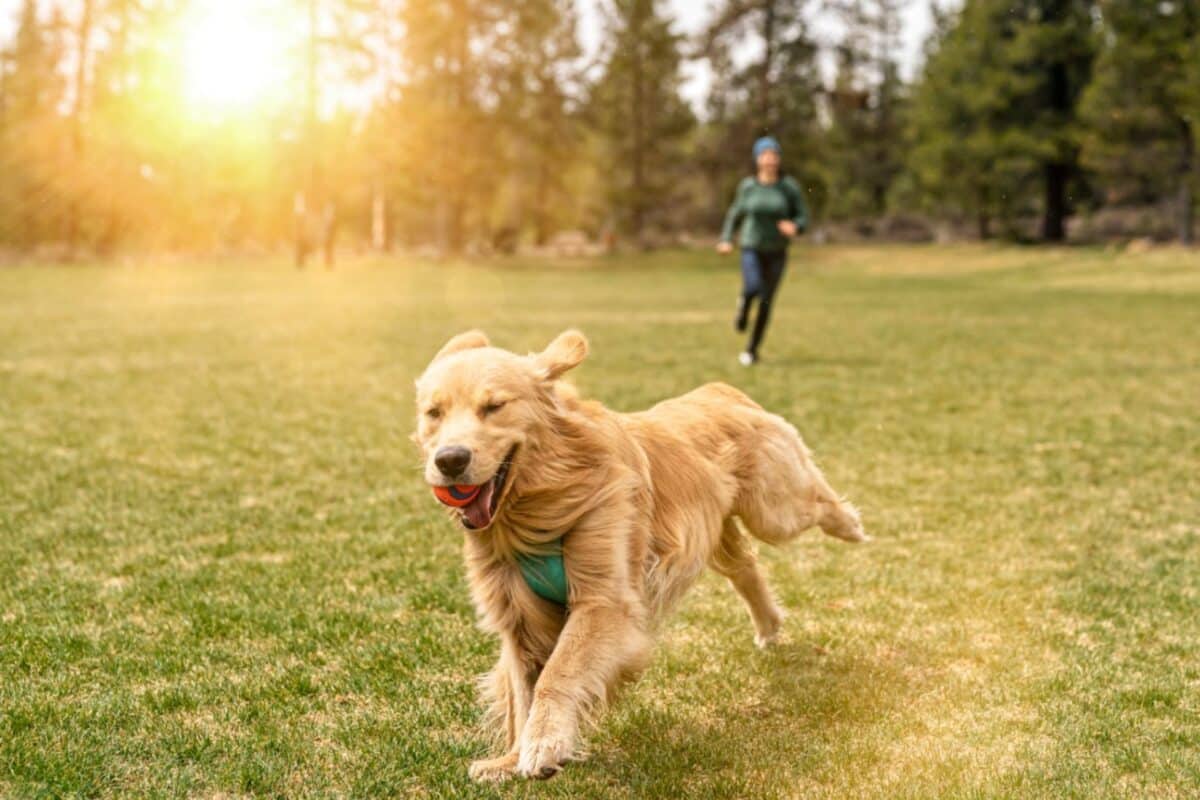The Health and Mood-Boosting Benefits of Pets
How caring for a pet can bring powerful mental health benefits

This therapist directory is offered in partnership with BetterHelp. If you sign up for therapy after clicking through from this site, HelpGuide will earn a commission. This helps us continue our nonprofit mission and continue to be there as a free mental health resource for everyone.
Need to talk to someone now? Find a crisis helpline
If you're a BetterHelp therapist with questions about your directory listing, please contact therapists@betterhelp.com
Dogs need regular exercise to live long and healthy lives. But they’re not the only ones who benefit from regular walks. Here’s how walking with your pooch can benefit you as well.

Dogs love going for walks, to the point that many owners take to spelling out w-a-l-k when talking about the activity to keep their pooches from getting overly excited. Daily walks are not just a great way to exercise your dog; you can benefit from them as well!
Before you head out the door, you’ll need to make sure you have all the right supplies. Always carry plastic bags with you to clean up after your dog. Leaving your dog’s droppings on the ground is not only inconsiderate of other people who use the path, it is unhealthy for the natural ecosystem of the area.
If your dog tends to pull when excited, you may want to get them a harness so that they don’t strain their neck or choke themselves. There are many different styles and types of harnesses. Just be aware that a harness will not stop your dog from pulling—that is the purpose of loose-leash training. The only other thing you’ll need is a pair of good walking shoes, and you’re ready to hit the pavement or path.
Got everything you need? Read on to learn four ways walking your dog can benefit your health—as well as your furry friend’s.
It’s no secret that if you work out regularly, you’ll get fitter. But with many workout programs, half the battle is sticking with it long enough to see the benefits. Walking with a dog nearly eliminates this challenge—they will be your training partner and coach all in one. Once you start to establish a routine, they will be so excited to get outside that they won’t let you skip a day, rain or shine.
Walking is a fantastic low-impact activity you can do anywhere. Over time, it will help strengthen your muscles, bones, and joints. You may even notice that your normal route is feeling a little easy and decide to stay out longer or walk up that extra hill.
How far you walk at a time and per day will depend on the breed and age of your dog—a 2-year-old border collie will have more endurance than an elderly pug, for example. Tailor your walk to your dog’s needs and abilities. If it’s a hot day or you are going for a longer hike, make sure to bring water and a bowl for your dog.
On warmer days, you’ll also need to consider the surface you’re walking on. In the sun, pavement can easily reach dangerously high temperatures and burn your dog’s paws. A good test is to place your hand or bare foot on the pavement. If you can’t hold it there for 10 seconds, it means the ground is too hot for your dog to walk on. On days like this, you’ll just need to make sure you walk on the grass or dirt. Alternatively, you can purchase booties for your dog to serve as foot protection.
Both you and your dog will get fitter the more you walk. If your pooch is up for it, they may one day even make a great running buddy!
There is a psychological reason why so many dogs become service animals for veterans and people living with PTSD: walking a dog can improve mood and reduce symptoms of depression and anxiety, and research shows that spending time with a dog can reduce output of the stress hormone cortisol.
For people struggling with depression, having a dog can be a complete game-changer. It can be hard to motivate yourself to get out of the house if you are doing it by yourself. You may experience physical fatigue as a symptom of depression, and this can make it challenging to exercise, even though studies have shown that regular exercise can be a powerful antidepressant.
But there’s no better motivator than your dog giving you big puppy eyes and begging to go for a walk. Having a dog forces you to get outside, which starts a long chain of positive effects for your mental health. Physical activity releases endorphins in the brain that energize you and create positive feelings. It will reduce stress, boost mood, and increase mental energy. Additionally, the routine of walking a dog every day can be a healthy distraction from negative thoughts.
The bottom line is that taking care of another living thing can make it easier to take care of yourself.
The companionship dogs can offer as walking buddies can also reduce loneliness. Walking a dog can often lead to conversations with other dog owners as well, and will help you stay socially connected to others.
Even if you don’t own a dog yourself, there are still plenty of ways to spend time walking them to achieve these benefits. Ask a friend or family member if you can take their dog around the neighborhood or look for other places to volunteer. Many animal shelters rely on volunteers to walk the dogs in their kennels. Not only are you getting these mental and physical health benefits for yourself, you’ll also have a boost from knowing you’ve helped dogs in need.
BetterHelp is an online therapy service that matches you to licensed, accredited therapists who can help with depression, anxiety, relationships, and more. Take the assessment and get matched with a therapist in as little as 48 hours.
Take Assessment HelpGuide is user supported. We earn a commission if you sign up for BetterHelp’s services after clicking through from this site. Learn moreYou’ve probably seen your dog passed out on the floor when they get home from a long walk or long bout of play—this is because exercise is tiring! You might not need a nap immediately upon arriving home like your dog does, but studies have shown that regular exercise does help improve your amount and quality of sleep.
Adult humans require 7-9 hours of sleep per night, but a recent study by the Centers for Disease Control and Prevention (CDC) has found that 1 in 3 adults do not get enough sleep. Sleep deprivation is associated with a higher risk of developing conditions like obesity, diabetes, and high blood pressure.
Additionally, lack of sleep can negatively impact your mental health. If you’ve ever felt irritable or had trouble focusing after a poor night’s sleep, you know what we’re talking about. Not to mention the physical effects, such as headaches, dry, burning eyes, and fatigue. It can be challenging to get yourself to exercise when you already are groggy and exhausted from lack of sleep. This is where your dog comes in! He will force you to overcome this barrier and get outside and break the harmful cycle of inactivity and poor sleep.
And you don’t need to be training for a triathlon to see the effects. At least 30 minutes of light to moderate exercise (that you can easily get from taking your dog for a walk) can help you achieve deeper, more restful sleep.
Keep in mind that exercising too close to bedtime can make it more difficult to fall asleep. Even light physical activity temporarily increases blood pressure, raises body temperature, and stimulates your nervous system, which may make it more difficult to wind down. Keep your walks limited to daytime hours and you’ll sleep like a baby!
Daily activity not only helps keep your skeletal and muscular systems in peak working condition, it will also help maintain cardiovascular health.
Your cardiovascular system includes your heart, blood, veins, and arteries. When your heart is not able to pump blood efficiently through your body or encounters a blockage, serious health issues can arise, including high blood pressure, heart failure, and coronary heart disease.
Regular exercise lowers blood pressure and resting heart rate, as well as your risk for developing cardiovascular disease. The CDC recommends that adults get at least 150 minutes of moderate physical activity per week. This comes out to just over 20 minutes of exercise per day for you. With your dog by your side, this can be an easy benchmark to hit.
For many dogs, 20 minutes per day is not enough activity—you will need to supplement with a longer walk, jog, or backyard time to make sure your pooch is getting their own daily recommended activity. Again, this will depend on the breed and age of your dog. Always consult your veterinarian to discuss how much exercise your dog should be getting per day.
More dogs than ever before are suffering from health issues like obesity—due to a combination of overfeeding and limited activity. Taking walks is one of the best ways to combat this. Daily walks will keep not only your heart healthy, but that of your dog as well.
What are you waiting for? Grab your leash and get out there!
Last updated or reviewed on September 30, 2024Millions of readers rely on HelpGuide.org for free, evidence-based resources to understand and navigate mental health challenges. Please donate today to help us save, support, and change lives.
Donate to HelpGuide.org today